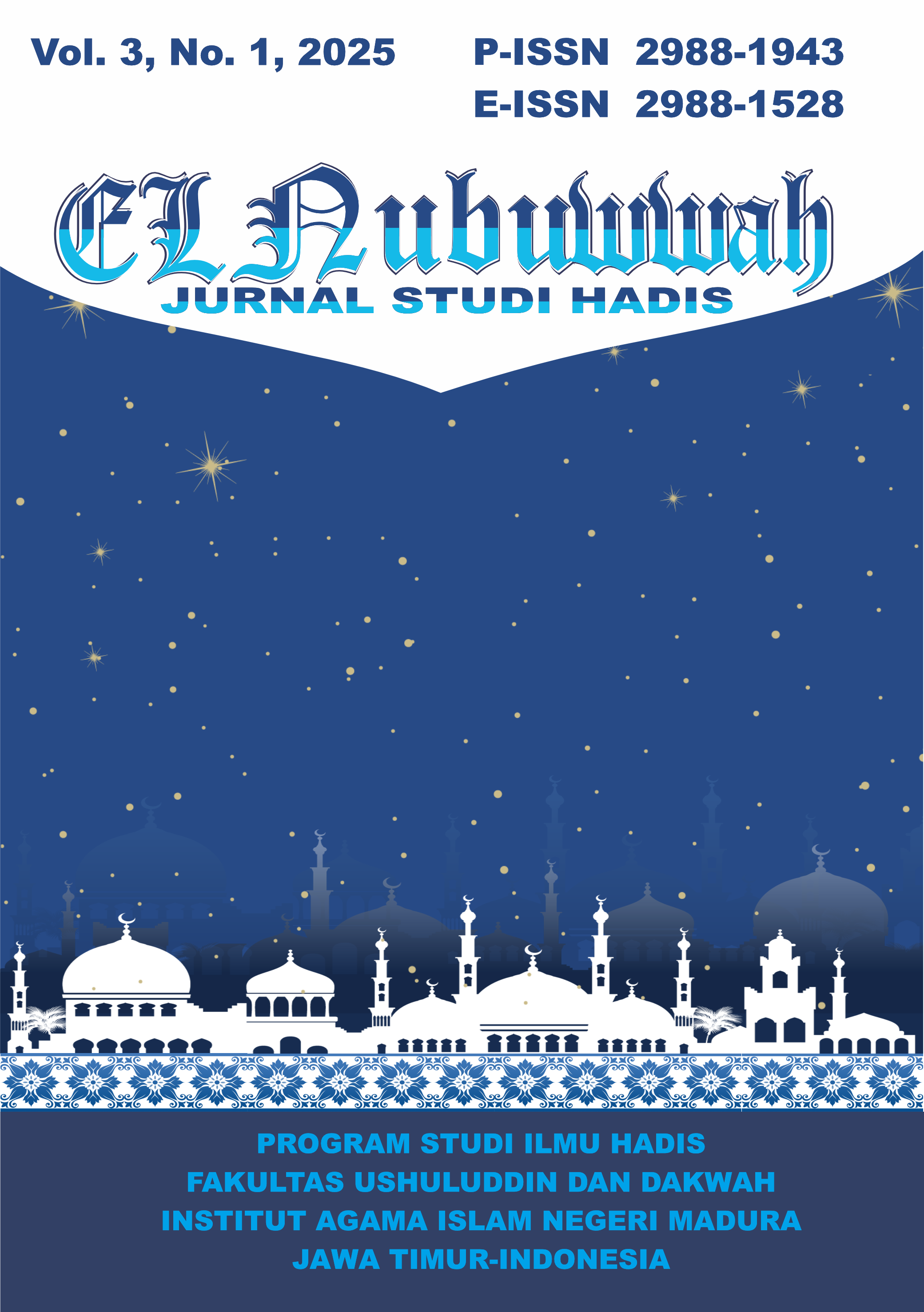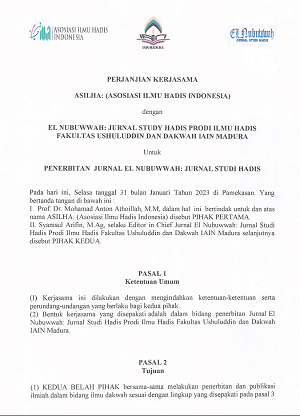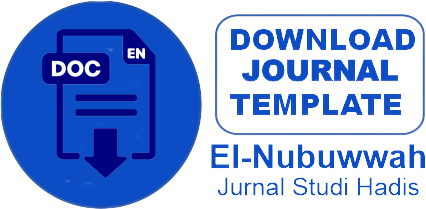Integrasi Pendekatan Tekstual dan Kontekstual terhadap Hadis Sahih di Era Modern
 Abstract views: 548
,
Abstract views: 548
,
 PDF downloads: 431
PDF downloads: 431
Abstract
Understanding ṣaḥīḥ ḥadīths has remained a critical methodological discourse in both classical and contemporary Islamic studies. Two major hermeneutical approaches—textual and contextual—are central to this discourse. The textual approach emphasizes a literalist reading of the ḥadīth text in order to preserve the authenticity and sanctity of the Prophet Muhammad’s teachings. In contrast, the contextual approach considers the socio-historical and cultural background in which a ḥadīth was transmitted, thereby enabling its normative messages to remain relevant to contemporary realities. This article addresses the methodological question of how these two interpretative approaches can be integrated to respond to the dynamic challenges of modern Muslim life.This study employs a qualitative-descriptive method using a library research model. The primary sources include both classical ḥadīth compilations and contemporary scholarly literature. Selected ṣaḥīḥ ḥadīths that are often debated between textualist and contextualist interpretations are analyzed to demonstrate the theoretical implications of both approaches. Findings indicate that the textual and contextual approaches are not inherently contradictory but rather complementary. The textual method safeguards the transmissional integrity (riwāyah) of the ḥadīth, while the contextual approach ensures that its meanings (dirāyah) can be appropriately situated within evolving socio-cultural frameworks. The integration of both provides a more balanced and comprehensive understanding of Prophetic traditions. In conclusion, a synthesis between textual fidelity and contextual relevance is essential to interpret ḥadīths holistically. This integrative framework is proposed as a viable model for contemporary ḥadīth interpretation that is both normatively authentic and socially responsive.
Downloads
References
Afriani, A., and F. Wijaya. “Pendekatan Tekstual dan Kontekstual dalam Study Hadist.” Alifbata: Jurnal Pendidikan Dasar 1, no. 1 (2021): 37–54.
Al-Bukhārī, Muḥammad ibn Ismāʿīl. Al-Jāmiʿ al-Musnad al-Ṣaḥīḥ al-Mukhtaṣar min Umūr Rasūl Allāh ṣallá Allāhu ʿalayhi wa sallam wa Sunanihi wa Ayyāmihi = Ṣaḥīḥ al-Bukhārī. Edited by Muḥammad Zuhayr ibn Nāṣir al-Nāṣir. 1st ed. Riyadh: Dār Ṭawq al-Najāh, 1422 H.
Al-Malula, M. “Maʿnācum Maghzā sebagai Metode dalam Kontekstualisasi Hadis Musykil (Telaah Pemikiran dan Aplikasi Hermeneutika Sahiron Syamsuddin).” Jurnal Ilmiah Citra Ilmu 15, no. 29 (2019): 29–38.
Al-Nasāʾī, Aḥmad ibn Shuʿayb. Al-Mujtabā min al-Sunan (al-Sunan al-Ṣughrā). Edited by ʿAbd al-Fattāḥ Abū Ghuddah. 2nd ed. Ḥalab: Maktab al-Maṭbūʿāt al-Islāmiyyah, 1986.
Al-Qushayrī al-Naysābūrī, Muslim ibn al-Ḥajjāj. Al-Musnad al-Ṣaḥīḥ al-Mukhtaṣar bi-Naql al-‘Adl ‘an al-‘Adl ilā Rasūl Allāh ﷺ. Edited by Muḥammad Fuʾād ʿAbd al-Bāqī. Beirut: Dār Iḥyāʾ al-Turāth al-ʿArabī, n.d.
Al-Tirmiẓī, Muḥammad ibn ʿĪsā. Sunan al-Tirmiẓī. Edited by Aḥmad Muḥammad Shākir, Muḥammad Fu’ād ʿAbd al-Bāqī, and Ibrāhīm ʿAṭwah ʿAwaḍ. 2nd ed. Cairo: Sharikah Maktabat wa Maṭbaʿat Muṣṭafā al-Bābī al-Ḥalabī, 1975.
Al-Ayyubi, M. Z. “Etika Bermedia Sosial dalam Menyikapi Pemberitaan Bohong (Hoax) Perspektif Hadis.” Jurnal Studi Ilmu-Ilmu Al-Qur’an dan Hadis 19, no. 2 (2019): 148–166.
Anggoro, Taufan. “Analisis Pemikiran Muhammad Syuhudi Ismail dalam Memahami Hadis.” Diroyah: Jurnal Ilmu Hadis 3, no. 2 (2019): 93–104.
Awhinarto, and Suyadi. “Otak Karakter dalam Pendidikan Islam: Analisis Kritis Pendidikan Karakter Islam Berbasis Neurosains.” Jurnal 1 (2020): 143–156.
Azizah, Ira Nur. Metode Pemahaman Hadis di Indonesia: Studi atas Pemikiran T.M. Hasbi Ash-Shiddieqy. Tesis M.Ag. Universitas Islam Negeri Syarif Hidayatullah Jakarta, 2020.
Dayan Fithoroini. “Hadis Nabi yang Tekstual dan Kontekstual (Analisis Pemikiran Muhammad Syuhudi Ismail).” Jurnal 2, no. 1 (2021).
Hidayat, Qamaruddin. Psikologi Agama. Jakarta: LP3ES, 1996.
Hafizzullah, F. I. Living Hadis dalam Konsep Pemahaman Hadis. Batusangkar: IAIN Batusangkar, 2021.
Makmur. “Metode Kesahihan Sanad Hadis (Telaah terhadap Pemikiran Syuhudi Ismail dalam Kaidah Kesehatan Hadits).” Al-Mutsla: Jurnal Ilmu-Ilmu Keislaman dan Kemasyarakatan 3, no. 2 (2021): 85–95.
Malik, Marhany, and Muh. Yusuf Pawellangi. “Analisis Pemikiran Arifuddin Ahmad tentang Metodologi Pemahaman Hadis.” Jurnal Ushuluddin 23, no. 2 (2021): 52–69.
Muzakky, Althaf Husein, and Fahrudin. “Kontekstualisasi Hadis dalam Interaksi Media Sosial di Era Millenial dalam Kitab Fatḥ al-Bārī Syarḥ Ḥadīs al-Bukhārī.” Diroyah: Studi Ilmu Hadis (2020).
Nasrullah H., Muh., Jannatul Husna, and Waharjani. “Syuhudi Ismail dan Pengembangan Pemikiran Hadis di Indonesia.” Jurnal 8, no. 2 (2022).
Suardi Didi. “Memahami Hadis Menurut Muhammad Al-Ghazali.” Jurnal Ilmu Al-Qur’an dan Hadist 4, no. 1 (2021).
Copyright (c) 2025 El Nubuwwah Jurnal Studi Hadis

This work is licensed under a Creative Commons Attribution-NonCommercial 4.0 International License.

























